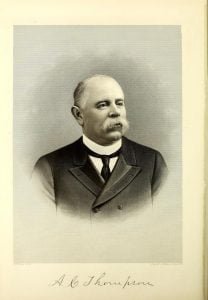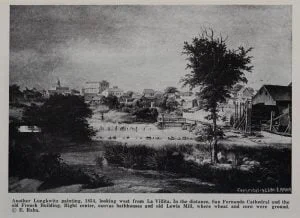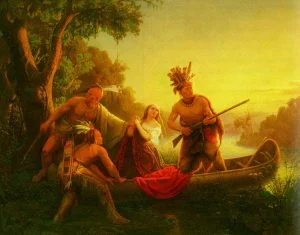Thompson Family of Brockton, MA
Albert Cranston Thompson, a resident of Brockton, Plymouth county, for over forty years, was a citizen of proved worth in business and public life. His influence in both is a permanent factor in the city’s development, a force which dominates the policy of at least one phase of its civil administration, and his memory is cherished by the many with whom he had long sustained commercial and social relations. As the head of an important industrial concern for a period of over thirty years, as chairman for nearly ten years, up to the time of his death, of the sewerage commissioners of Brockton, as president of the Commercial Club, as an active worker in church and social organizations, he had a diversity of interests which brought him into contact with all sorts and conditions of men and broadened his life to an unusual degree. Good will and sympathy characterized his intercourse with all his fellows. As may be judged from his numerous interests and his activity in all he was a man of many accomplishments, of unusual ability, of attractive personality and un-questionable integrity. He was earnest in everything which commanded his attention and zealous in promoting the welfare of any object which appealed to him, and his executive ability and untiring energy made him an ideal worker in the different organizations of every kind with which he was connected. Mr. Thompson was a native of the county in which he passed all his life, having been born Dec. 19, 1843, in Halifax, a descendant of one of the oldest and best known families of that town. The families of Thompson and Fuller were very numerous and prominent in that region, so much so that according to tradition a public speaker once, in opening his address, instead of beginning with the customary “Ladies and Gentlemen” said “Fullers and Thompsons.” So much for their numbers. The line of descent is traced back to early Colonial days.







